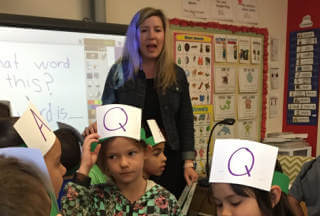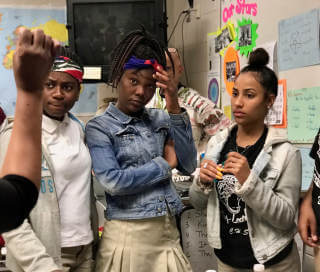"Students learn more from their peers than they do from their teachers"
Interaction is the fifth component of SIOP. It is a helpful reminder to the teacher that students interacting with students should be a cornerstone of how teaching and learning operate.
This component gets to the heart of what students want: opportunities to interact with one another, with the teacher, and - at times - with their native language(s). Of all of the things that school has to offer, students want to interact with their peers. Effective teachers understand this, and their classrooms reflect this. The four features of this component reflect aspects of interaction. The first feature reminds teachers of how important discussion (especially student to student) is. The second feature helps teachers remember the learners (as opposed to the teacher) are at the center of the learning: grouping students just makes sense. Wait/think time, the third feature, is a strategy that can help teachers improve the effectiveness of all interactions. The same can be said for the final feature of this component: the use of L1 (native language) in the classroom.


It's all about the interactions in and among the students. This component helps teachers remember how important it is to create the conditions in which students work together in meaningful ways. Perhaps, in this subtle way, it also reminds the teacher to get out of the way so the students can work more often with one another.
Giving ourselves the freedom to experiment with different group configurations keeps things fresh. It helps keep us on our toes and gives students a different way of interacting with one another and with the content/language. More often than not, it is classroom management that gets in the way of a teacher's desire to use cooperative learning. However, research shows that in the long run, the opposite occurs: students who work with one another meaningfully and regularly require fewer classroom management strategies. Here are 5 tips that will help with classroom management of any group work activity:
For more information on using group configurations, check out SIOP feature #17.
The purpose of this SIOP component is to encourage teachers to consciously plan for interacting with their peers as a means to interact with the language and the content. Considering how the students will work together and how to develop discussion are excellent ways to increase interaction. Creating think time (wait time) space also increases the chances of interaction. Using a student's L1 (native language) can build a bridge between discomfort and comfort with the lesson and its three components: the content, the language, and the other learners.

There are plenty of reasons to invite TESOL Trainers to provide professional development on SIOP to your teaching staff. Here are four of the most powerful:
Click the button below to claim your free ebook and join our mailing list.